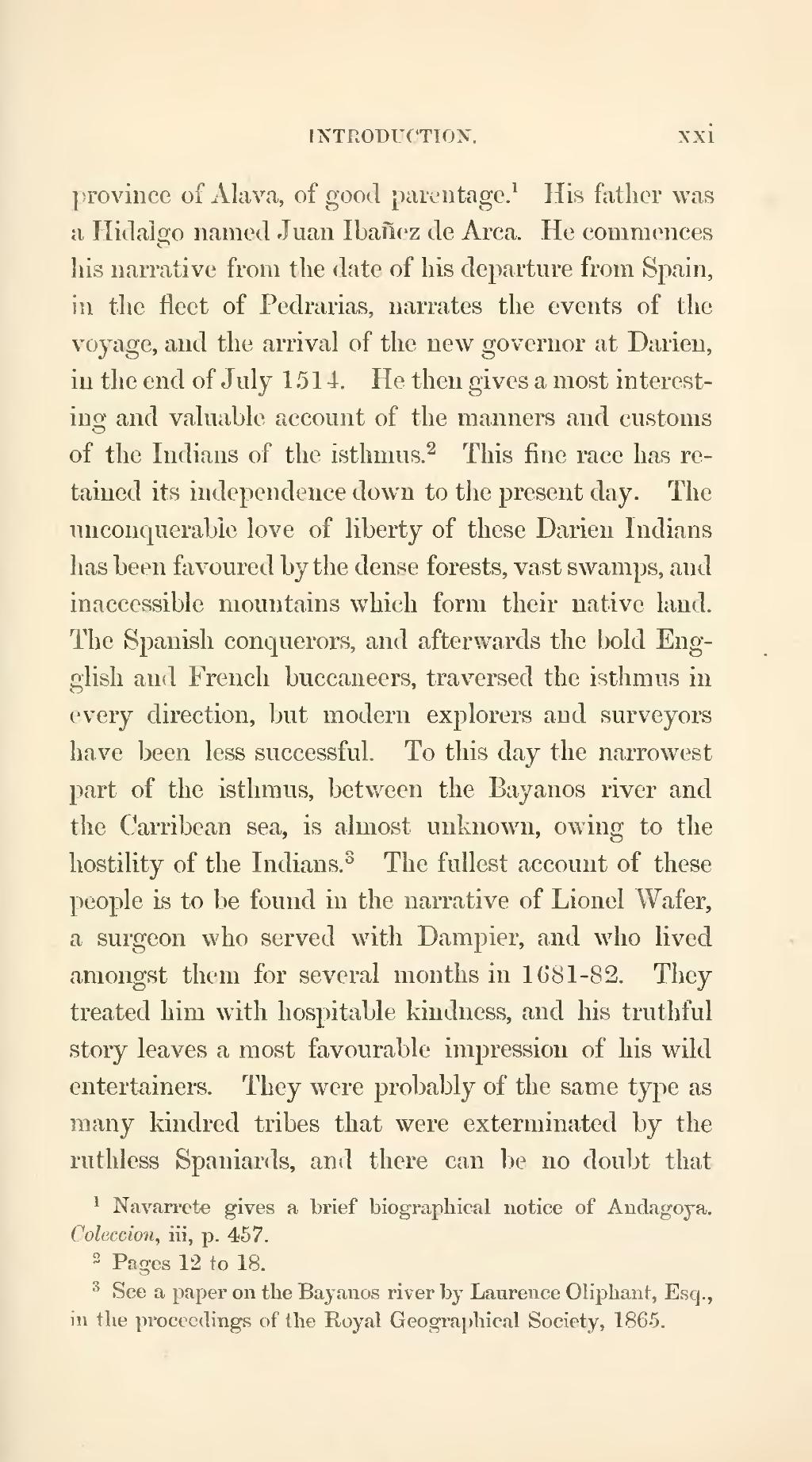province of Alava, of good parentage.[1] His father was a Hidalgo named Juan Ibañez de Area. He commences his narrative from the date of his departure from Spain, in the fleet of Pedrarias, narrates the events of the voyage, and the arrival of the new governor at Darien, in the end of July 1514. He then gives a most interesting and valuable account of the manners and customs of the Indians of the isthmus.[2] This fine race has retained its independence down to the present day. The unconquerable love of liberty of these Darien Indians has been favoured by the dense forests, vast swamps, and inaccessible mountains which form their native land. The Spanish conquerors, and afterwards the bold English and French buccaneers, traversed the isthmus in every direction, but modern explorers and surveyors have been less successful. To this day the narrowest part of the isthmus, between the Bayanos river and the Carribean sea, is almost unknown, owing to the hostility of the Indians.[3] The fullest account of these people is to be found in the narrative of Lionel Wafer, a surgeon who served with Dampier, and who lived amongst them for several months in 1681-82. They treated him with hospitable kindness, and his truthful story leaves a most favourable impression of his wild entertainers. They were probably of the same type as many kindred tribes that were exterminated by the ruthless Spaniards, and there can be no doubt that
Page:Narrative of the Proceedings of Pedrarias Davila (Haklyut, 34).djvu/37
Appearance

